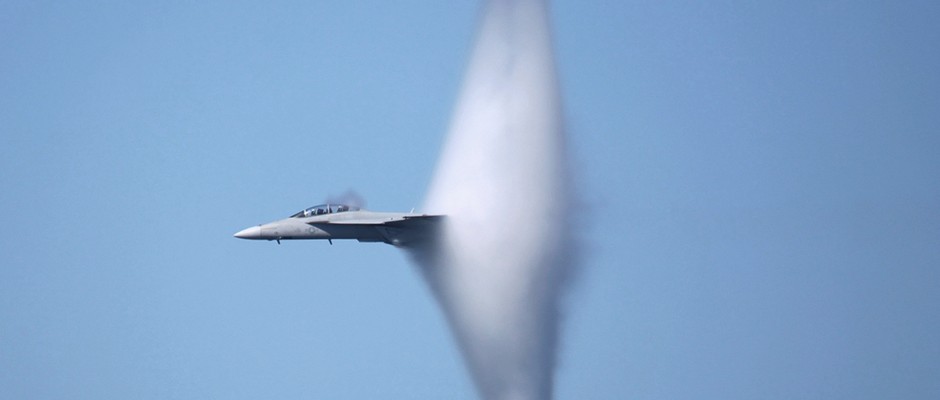
Breaking the sound barrier: Why sonic booms happen – and how new NASA tech could quiet them
A sonic boom is a deep, thunder-like noise that can be felt as a sudden jolt or vibration, as well as heard. It's often described as sounding like a loud explosion or gunshot.
When an aircraft is flying below the speed of sound, sound waves ripple and spread out in front of and behind the plane. This contributes to the rumble and roar you hear when a plane is flying overhead. Of course, these waves are invisible, but we see something similar with slow-moving boats on calm water, when you can see gentle undulations of the bow and stern waves created by the boat’s hull.
For the plane, the sound waves are spreading out from the aircraft at the speed of sound, which is about 1,200km/h (750mph). If the plane accelerates to the speed of sound or faster, then the sound waves can no longer move fast enough to get out of the way of the aircraft. The waves bunch up and combine to form a shock wave.
This then trails behind the aircraft in a V-shape. Something similar is seen for the boat on water. When that craft speeds up and gets faster than the speed of the water waves, then V-shaped white water is seen trailing behind the boat.
For the aircraft, the shock wave is what causes the loud, thundering sonic boom. It’s happening all the time, but for people on the ground, they only hear it once when the wake passes over them. Occasionally a double bang is heard, because two wakes are created, one by the aircraft nose and the other by the tail.
More like this
NASA is currently researching how to make a quieter sonic boom. They are doing this by shaping the supersonic aircraft so the wake created by the plane is less pronounced, meaning the boom is more muffled, making a ‘whoomph’ rather than a ‘bang’.
Read more:
- What’s the loudest a sound can be?
- Why does the clinking sound go down in pitch when I stir sugar into my coffee?
- Where do sound waves end up?
- How does a small bird such as a robin produce such a loud sound?
Asked by: Sam Dawson, via email
To submit your questions email us at questions@sciencefocus.com (don't forget to include your name and location)
Authors
Trevor carries out research, teaching and commercial activities in acoustic engineering, focusing on room acoustics, signal processing and perception.
Sponsored Deals

May Half Price Sale
- Save up to 52% when you subscribe to BBC Science Focus Magazine.
- Risk - free offer! Cancel at any time when you subscribe via Direct Debit.
- FREE UK delivery.
- Stay up to date with the latest developments in the worlds of science and technology.





